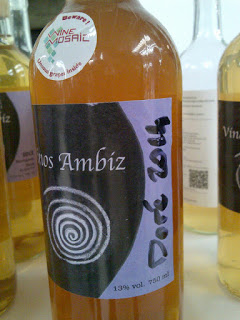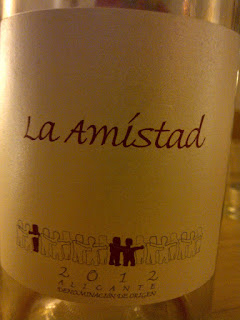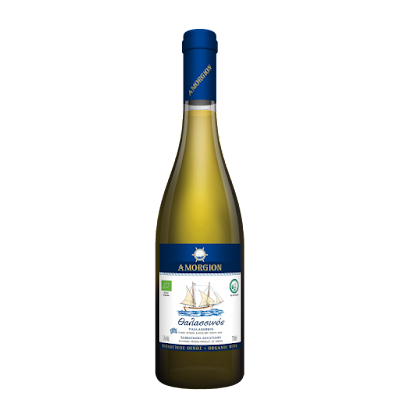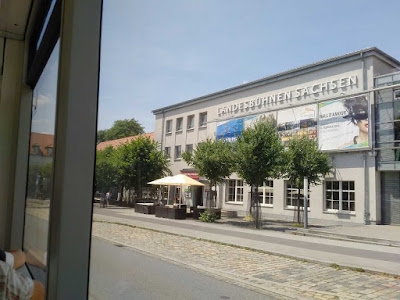This is not going to be one of those musings people go in for while in their cups. Nor hopefully what is entitled 'Disjointed Ramblings' in a local magazine down our way (it
literally consists of disjointed ramblings).
No, we would like to draw some strings together of themes which have appeared in this blog. We would actually like to plead for diversity specifically in wine lists in the UK, whether in restaurants, supermarkets or wine merchants here.
In our researches into unusual grape varieties we have become ever more aware that the wine available in this country lies mostly within a certain band of taste. We're not trying to talk down the British wine trade (one of the most eclectic and openminded in the world) nor the taste in wine here. Not having any wines of our own until recently, we are familiar with a whole range of wine tastes from across the world you wouldn't find in most other places. Try looking for Pinotage in France or Italy.
The situation is the same in other places to some extent.
 |
| shouldn't have drunk that Pineau D'Aunis |
There are some grape varieties which are similar to others and others so different that they challenge your definition of what wine should be. A case in point occurred a couple of years ago when we gave a bottle of Pineau D'Aunis (a good one from the Loir) to an important French client who was a connoisseur of wine and everything good in life. He opened it with friends and was so appalled with the unfamiliar taste (and Pineau D'Aunis is certainly unfamiliar if you have never tried it) that they all spat it out and send a message to the effect that it was not wine at all in their opinion. We had asked the client to give us his honest reaction so were happy to have this particular tasting note.
On another occasion we gave a bottle of Poulsard to an equally bon-vivant and experienced client and his reaction was along the lines of 'I didn't think much of the Rosé'. Poulsard has an uncommonly light colour but it is most definitely a red wine, not a rosé, at least in the bottle in question.
There are many other grape varieties which challenge perceptions of what wine should be. We'll come to those in a moment but meanwhile, there are also categorical limits in the Band of Taste referred to above.
We seem more or less across the board to be obsessed with extraction, warmth, hedonism, fruitiness, ripeness, full-flavouredness, opulence. Where are the qualities of lightness, food-friendliness, aromatics, etheriality, refreshment, re-invigoration?
Everyone knows how alcohol levels have been creeping up to the level where 15% is becoming quite common. This may be due to the Parker effect, global warming or we would suggest the drink-drive laws and health advice whereby people make do with one glass of wine of an evening. In that case, might the wine not be better if it is concentrated so as to inhibit taking more than a sip at a time? Just a thought.
Also we have to admit that the further North you go (or South in the southern hemisphere) the more warming you might require your wine to be. Winter-warmers and summer-slurpers are familiar from merchants wine lists but even so, we maintain wine styles are nowhere near representative of what is out there.
Here are some descriptions of wines in summer cases offered by Laithwaites. Laithwaites is the most successful wine-merchant in one of the world's most diverse and dynamic wine importing countries: the United Kingdom. These descriptions come from the most popular mixed cases from that most successful wine-merchant in that most diverse and dynamic country:
"Dense and spicy"
"Beautifully rich and smooth"
"Concentrated, ripe..."
"Intense full flavoured"
"Velvety fruit-rich"
and those are the summer selection. The winter selection is not much different ("Supple, luscious," "Seriously fruity and bold" etc.). Admittedly these are the reds but the whites are in similar vein: "Rounded and creamy," "Opulent."
This is obviously what people want. There's nothing wrong in any of this apart from the fact there is so much more to be had in the world of wine.
When we started our researches into wine, the typical audience seemed to be well upholstered middle-aged gentlemen whose horizons included Bordeaux and Burgundy but not very much else. In the last 10 years it has been heartening to watch the rise of the Somms, milleniums and younger people in general. They are predictably much less conservative but even so, restaurants, supermarkets and even merchants have been slow to react.
Here are two winelists from Italian restaurants we have visited recently;
Restaurant 1.
Sparkling
Prosecco Valdobbiadene
Spumante Rose extra dry (origin not stated).
White
Chardonnay
Inzolia
Pinot Grigio
Cataratto
Sauvignon Blanc
Soave
Grillo
Vermentino di Gallura
Gewuertztraminer
Gavi
Rose
Pinot Grigio rose
Red
Cabernet Suvignon, Veneto
Merlot, Veneto
Nero D'Avola, Sicily
Madego, Veneto (a Bordeaux blend)
Shiraz, Sicily
Rubro Sangiovese (Sangiovese from Umbria)
Barbera d'Asti
Cannonau di Sardegna
Valpolicella Ripasso
Chianti Classico
Campo Buri La Cappuccina, Veneto (Carmenere, Osoleta)
Barolo
Amarone Classico
Dessert wines
Moscato, Sicily
Carmenos Rosso, Veneto (a sweet version of Campo Buri above - Carmenere and Osoleta).
Restaurant 2
Sparkling
Prosecco (unspecified)
Moet et Chandon NV
Veuve Clicquot NV
White
Trebbiano d'Abruzzo
Frascati Superiore
Fiano Mandarossa
Sauvignon Blanc
Picpoul de Pinet
Pinot Grigio
Gavi di Gavi
Rose
Rosato Veronese
Red
 |
| Biferno, Molise |
Montepulciano D'Abruzzo
Chianti Classico
Merlot (Chile)
Malbec (Argentina)
Biferno Rosso
Corvina Verona
Rioja
Amarone
Restaurant 1 was rather reliant on one supplier and Restaurant 2 was not only Italian but there were considerable overlaps with - for Italy- rather a lot of international varieties but our point is that with the possible exception of the Carnmenere/Osoleta blends, there was really nothing out of the ordinary here and that 'ordinary' really didn't stray beyond certain narrow parameters of taste. Some of these wines weren't cheap either although the establishments were let's say 'local' ones.
Now to our list of what might have been. We could imagine a sprinkling of one or two of the following might ginger up tired lists such as these. We are sticking to Italy in this (there is plenty of choice there after all).
Sparkling
Ortrugo
Pignoletto
Spergola
and a Lambrusco (why not?).
White
Albarola
Locorotondo (Verdeca, Bianco D'Alessano and other local varieties)
Malvasia
Manzoni Bianco
Nosiola
Friulano
Petite Arvine
Ribolla Gialla
Trebbiano Spoletino
Verduzzo
Red
Bonarda/Croatina
Frappato
Fumin
Grignolino
Piedirosso
Raboso
Refosco
Schiava/Vernatsch
Schioppettino
Dessert
Maculan Torcolato (Vespaiola)
Felluga Picolit
Some of these may be difficult to obtain but we suspect the fact you don't see them very often has more to do with worries about unfamiliarity.
And now to the real challenge implicit in this post: the wines that to some might not taste like anything they might have experienced before and might at first not taste like wine at all. We thoroughly recommend seeking them out nevertheless. We have already mentioned Pineau D'Aunis and Poulsard which should really hold no terrors anymore but the following might push the envelope rather and that is for us, a good thing:
White
Amigne
Bianco D'Alessano
Dore
Ortrugo
Petit Meslier
Rotgipfler
Szeremi Zold
Zalema
Zierfandler
Red
Baco Noir
Caino Tinto
Espadeiro
Folle Noir (aka Jurancon Noir, Fuella Nera)
Menoir(e)
Negrette
Norton
Prieto Picudo
Rojal
Royal
Turan
Vinhao (aka Sousao)
Voudomato
 |
| Dore - unknown to 'Wine Grapes' |
 |
| Rojal, not to be confused with Royal |
 |
| Royal, not to be confused with Rojal |
 |
| Turan, the least like any wine you ever tasted |
 |
| Szeremi Zold. Bags of character. |









































